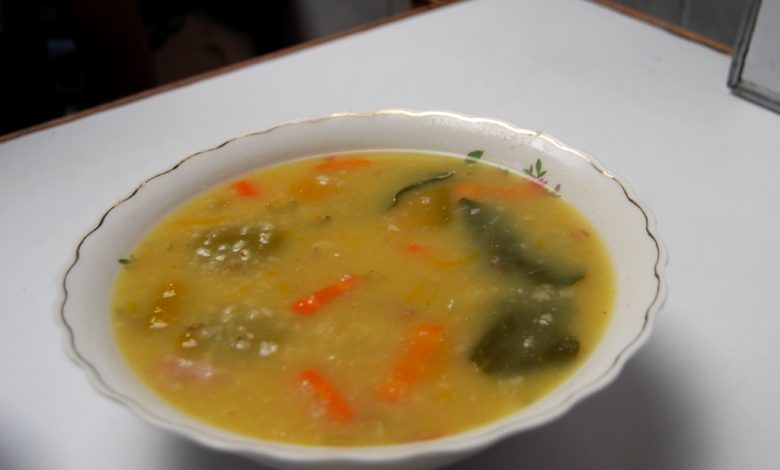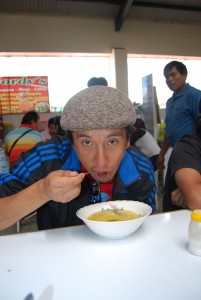Wheat Soup (Chaque) to Beat the Cold

When chill settles on Cuzco, its people turn to something warm, such as a good soup. Trigo chaque (in Quechua ch’aqi), a soup made with wheat, is very popular at such times, like now, when the rains come in and people feel cold.
It makes people happy and gives them a lot of energy to keep fulfilling their daily tasks. It becomes like a balsam that soothes weary muscles; it reanimates and brings a good mood when the city wakes up to rain or cold.
It is just so delicious and energizing that when you taste it you have strength to be able to accomplish whatever you need, instead of leaving it for another day.
In reality, of course, those are not the only benefits this soup has. Even though it might seem humble, it has a high level of protein that is often undervalued since it is not strongly promoted in the media. We could even consider wheat chaque as one of the most complete meal, since it has all the nutritional groups .

This dish is an old and traditional one in the Andes. Even though wheat may come from Europe, soups made with local seeds and grains, such as quinoa, have been made here from time immemorial. It makes sense local people would incorporate European wheat–the basis of Spanish bread and their life–into this regime as Andeans appropriated Spanish foods into their own culture. Today soups, including trigo chaque, continue to play a very important role in local cuisine.

The wheat in this dish is called ch’aqi (or chaque in Spanish) because of the process in which the grain is transformed into something edible. Though many sources will say it is made with semolina, the Quechua root word, the verb ch’aqiy, refers to throwing something with great force, or pounding it with a rock. As a result chaque is wheat transformed by being pounded with a rock, probably on one form or another of a batán or flat stone with a rocking top stone for grinding and poubnding things such as is found in most local kitchens.
Peruvians seldom appreciate soup as the main dish, even though it could easily be, since the culture is for soup to be the first course of a meal made in two halfs, as if following Andean duality, the sopa and segundo (soup and second) as it is often called. But it is very important anyplace where food is offered to the general public, such as the comedores (eating areas) of markets and in restaurants. While the upper classes may eat it, generally it is the common people who demand it.
Its main ingredients are a rich meat broth and vegetables, since these make a great combination with smashed wheat. One finishes off the soup with aromatic herbs which make a meal special and pleasing to any palate.
One can show in this way that it is not impossible to |eat richly but healthfully. In what follows we provide the recipe for this delicious soup which originates in the Andes, in one of the coldest places of our Peru.

TRIGO CHAQUE
Ingredients:
3/4 kg. de smashed wheat (or semolina if needed)
3 carrots
a piece of winter squash such as hubbard
spinach
1/2 kg. beef
2 sticks celery
1/2 red pepper
2 stems turnip greens (also called rape–bi.e. brassica rapa). One could possibly substitute mustard greens if rape is not available.
diced fresh flatleaf parsley
salt (to taste)
A couple potatoes diced in cubes.
Fresh, shelled green fava beans
Preparation:
One boils the meat in enough water to cover it, along with diced celery, diced rape, diced red pepper, and salt. (often in Cusco they use an olla express, the local name for pressure cooker, since the high altitude means it takes longer for things to cook.
Once it cooks, the meat is removed from the broth and it is cut into pieces before being divide into four equal sized portions.
The wheat is added to the broth along with the potato, the carrots, the fava beans, and the spinach. Brought to a boil they are cooked for ten mins in the pressure cooker.
The meat cut in pieces should be added to the soup.
Finally, just before serving one scatters fresh and finely diced parsley on the soup to give a bit bit more color and aroma.




